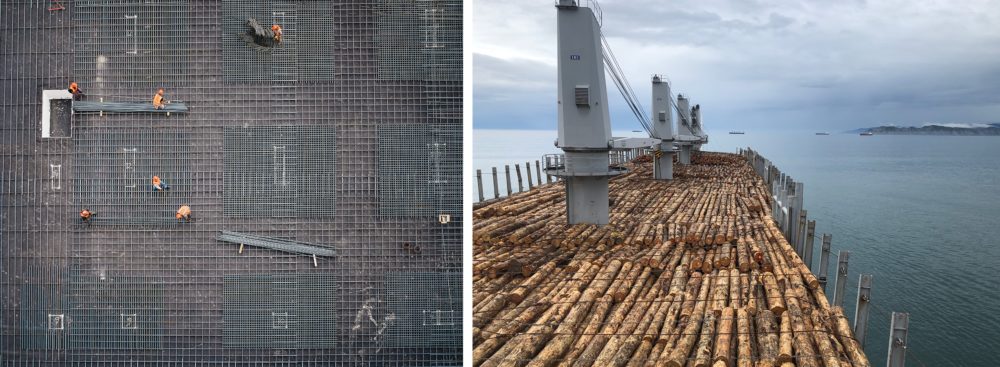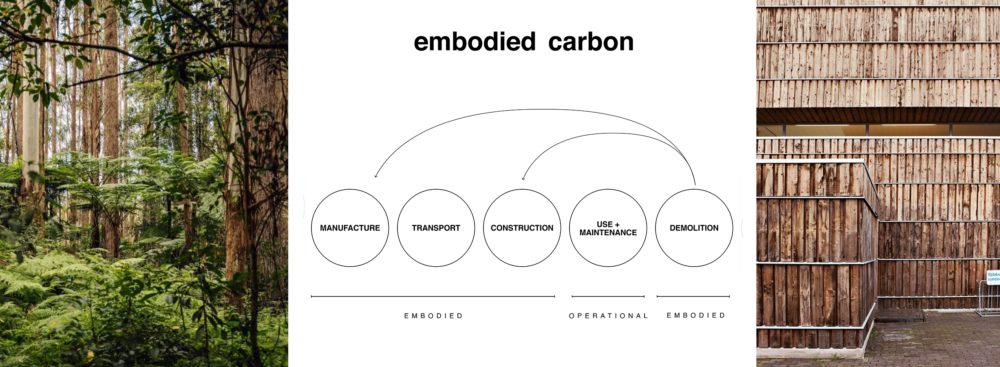CO2 and Mass Timber
Renewable construction products like wood can reduce the overall embodied carbon of a building. Embodied carbon refers to the greenhouse gas emissions generated from the manufacture, transport, installation, maintenance, and disposal of building materials. Mass timber is a range of manufactured wood products that are engineered to precise design standards and tested to meet national and international codes with a diverse array of applications like structural members and wall panels. Specifically, mass timber can substantially reduce related emissions in a project as it replaces carbon-intensive products like cement and steel, which contribute about ten percent of anthropogenic emissions annually.1 Gates, “Buildings Are Bad for the Climate,” October 28, 2019.
Mass timber, like all wood products, begins with the tree. The health of the forest and ecosystem more broadly must be considered in order to ensure actual carbon sequestration and sustainable long term growth. A healthy forest is a complex ecosystem that includes the biodiversity of the soil, plant life and various critters that live in, under and on soil and plants. Trees as monocultures – where only one tree species is replicated in rows and engineered for market – is not a forest.
The distinction must be clear. Using mass timber in a sustainable way means understanding the broader ecological implications of its material supply chain. This is not at odds with sustainable forest management practices which implements select forest clearing as a fire mitigation strategy.2 WA Forest Protection Association, “Forest Health – Washington Forest Protection Association.”
Timber building can achieve a 25% reduction in global warming potential compared to its concrete counterpart.3 “Economist Impact,” Economist Impact, n.d., https://carbonremoval.economis...;But developing the North American-based mass timber supply chain is critical in the reduction of transport related emissions. To further reduce the greenhouse footprint of mass timber we should look at the end-of-life conditions for the product, promoting a developed circular economy where the wood members are reused in new buildings, rather than going to waste in the current linear product-to-waste economy.

The distinction must be clear. Using mass timber in a sustainable way means understanding the broader ecological implications of its material supply chain. This is not at odds with sustainable forest management practices which implements select forest clearing as a fire mitigation strategy. 1
Timber building can achieve a 25% reduction in global warming potential compared to its concrete counterpart. 2But developing the North American-based mass timber supply chain is critical in the reduction of transport related emissions. To further reduce the greenhouse footprint of mass timber we should look at the end-of-life conditions for the product, promoting a developed circular economy where the wood members are reused in new buildings, rather than going to waste in the current linear product-to-waste economy.

- 1 WA Forest Protection Association, “Forest Health – Washington Forest Protection Association,” September 4, 2023.
- 2 “Economist Impact,” n.d.